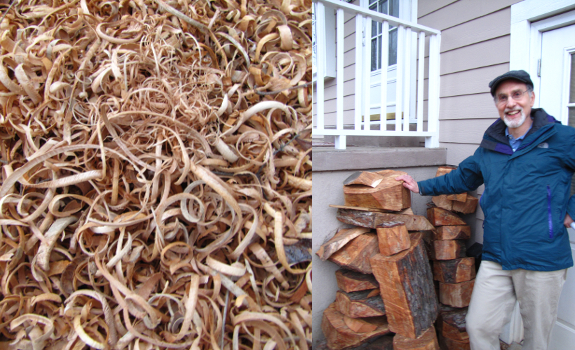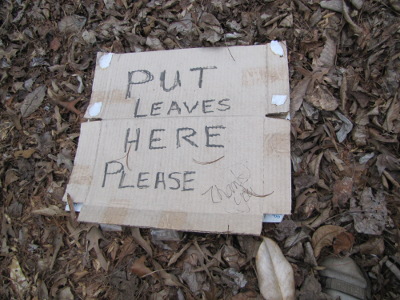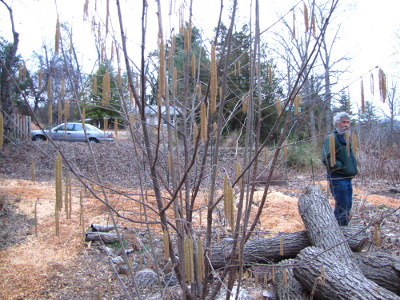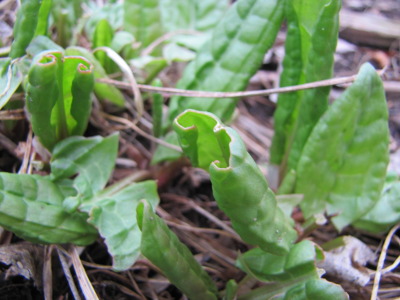
Mulch and herbs in the forest garden

 Yesterday,
I showcased the trees,
shrubs, and vines that did best in two Appalachian forest gardens, but what about the lower
layers? The first thing I was struck by in both Alice and
Robert's gardens was their deep mulches. Finding enough waste
materials to mulch with is always a struggle on our farm, but Alice and
Robert had both tapped into the copious organic matter being thrown
away in cities every day.
Yesterday,
I showcased the trees,
shrubs, and vines that did best in two Appalachian forest gardens, but what about the lower
layers? The first thing I was struck by in both Alice and
Robert's gardens was their deep mulches. Finding enough waste
materials to mulch with is always a struggle on our farm, but Alice and
Robert had both tapped into the copious organic matter being thrown
away in cities every day.
 Alice uses leaves --- a
system easy to replicate for any city-dweller --- but Robert's method
of finding mulch is even more elegant. Robert is a bowl-turner
who makes wooden bowls in his home studio, so he scavenges fallen trees
from the neighborhood. The trees are cut into pieces to make into
bowls, and the curly shavings are spread heavily on the soil of his
garden. Add in some alpaca manure for fertility, and you've got a
very healthy, happy forest garden.
Alice uses leaves --- a
system easy to replicate for any city-dweller --- but Robert's method
of finding mulch is even more elegant. Robert is a bowl-turner
who makes wooden bowls in his home studio, so he scavenges fallen trees
from the neighborhood. The trees are cut into pieces to make into
bowls, and the curly shavings are spread heavily on the soil of his
garden. Add in some alpaca manure for fertility, and you've got a
very healthy, happy forest garden.
 Although
it was too early to see most of the herbs in the forest garden, a few
were already poking up through the mulch. Alice had stinging
nettles along the shady edge of her garden and sorrel and horseradish
mixed in among the trees and shrubs. She mentioned that she
wished she hadn't planted the horseradish --- the plants are extremely
vigorous and nearly impossible to remove if you change your mind.
I'll have to come back in the summer to see the lower level of these
two forest gardens in all their glory.
Although
it was too early to see most of the herbs in the forest garden, a few
were already poking up through the mulch. Alice had stinging
nettles along the shady edge of her garden and sorrel and horseradish
mixed in among the trees and shrubs. She mentioned that she
wished she hadn't planted the horseradish --- the plants are extremely
vigorous and nearly impossible to remove if you change your mind.
I'll have to come back in the summer to see the lower level of these
two forest gardens in all their glory.
| This post is part of our Real Forest Gardening lunchtime series.
Read all of the entries: |
Want more in-depth information? Browse through our books.
Or explore more posts by date or by subject.
About us: Anna Hess and Mark Hamilton spent over a decade living self-sufficiently in the mountains of Virginia before moving north to start over from scratch in the foothills of Ohio. They've experimented with permaculture, no-till gardening, trailersteading, home-based microbusinesses and much more, writing about their adventures in both blogs and books.
Want to be notified when new comments are posted on this page? Click on the RSS button after you add a comment to subscribe to the comment feed, or simply check the box beside "email replies to me" while writing your comment.
- Remove comment
- Remove comment
